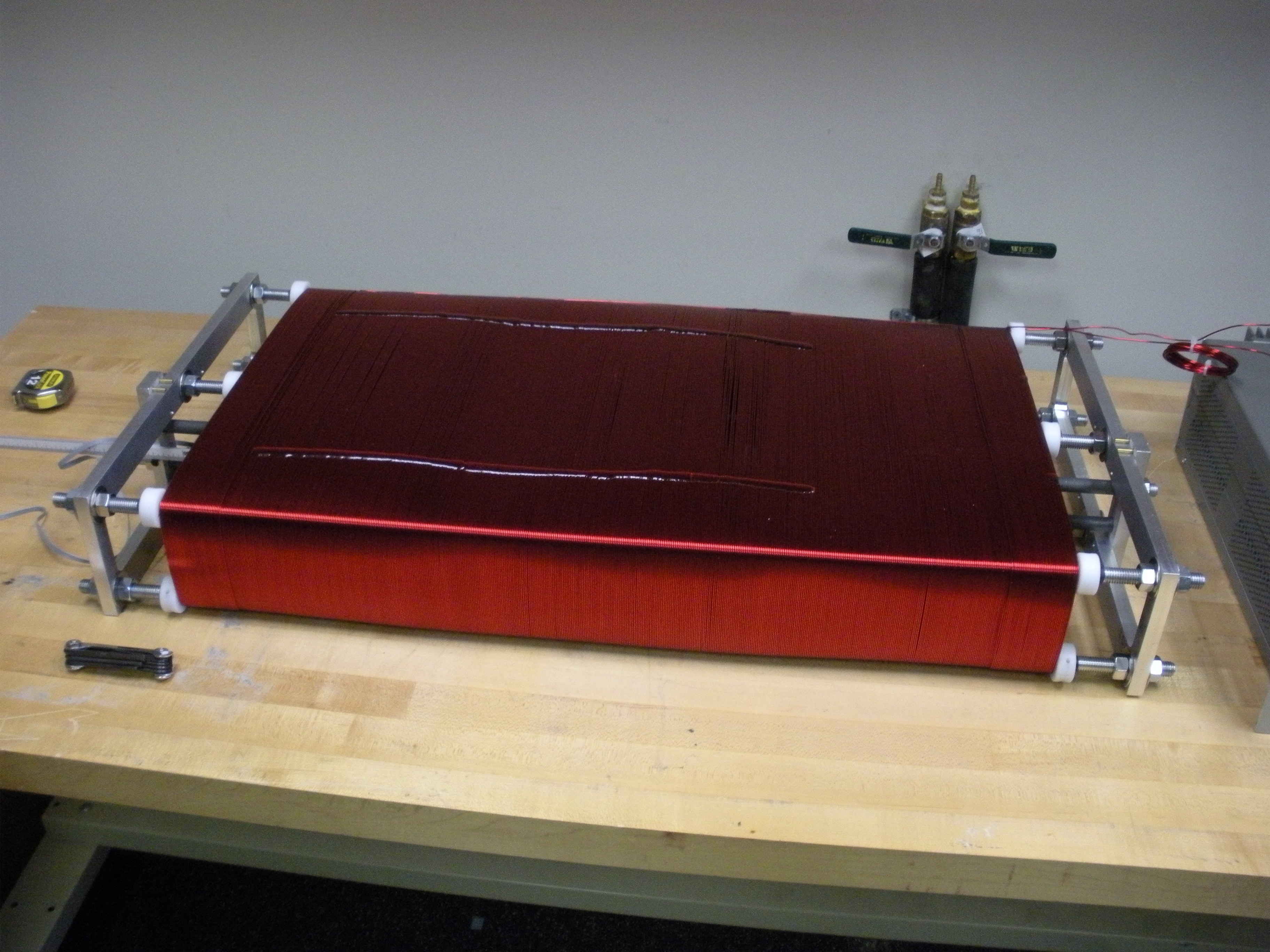 Completed solenoid magnet for the muon g-factor measurement.
Completed solenoid magnet for the muon g-factor measurement.
I am developing a pedagogical experiment appropriate for the undergraduate advanced physics lab to measure the "gyromagnetic ratio" gμ of the muon. This ratio is an important measure of a muon's quantum mechanical properties. The technique is similar to the one originally used by Garwin, Lederman and Weinrich to determine parity non-conservation in the pion-muon-electron decay chain, and is a modification to the technique developed by C. Amsler. Briefly, positively charged muons produced ion the upper atmosphere are stopped in a copper plate located inside a solenoidal magnet and sandwiched by sheets of plastic scintillator. The muon precesses in the solenoid's magnetic field before it decays to a positron and 2 neutrinos and the positron is subsequently detected in the plastic scintillators. The modulation of the shape of the decay time distribution determines gμ.
Don Davis is a physics major assisting me on this
project under the auspices of SMU's undergraduate associates (URA)
program. Don has designed the PMT holders and scintillating fiber collars,
built the scintillator paddles and the fiber collars, and performed
a variety of commissioning tests to verify the working of the scintillator
paddles. He plans to take data with the completed detector in Fall 2010.
 Completed solenoid magnet for the muon g-factor measurement.
Completed solenoid magnet for the muon g-factor measurement.
Nathan Hedberg is another undergraduate working on the same
project. Nathan is writing a Java based simulation that will mimic the
slowing and stopping of muons in the detector stack, the precession of
the muon's magnetic moment, and the decay of the muon into an electron
and two neutrinos. He aims to completely mimic the behavior of the
detector with an eye toward improving its performance.
Former physics students, Amy Hand, Alex Weckiewicz, Zach Parvin and Elisa Tomulet also
worked on various aspects of the same project.